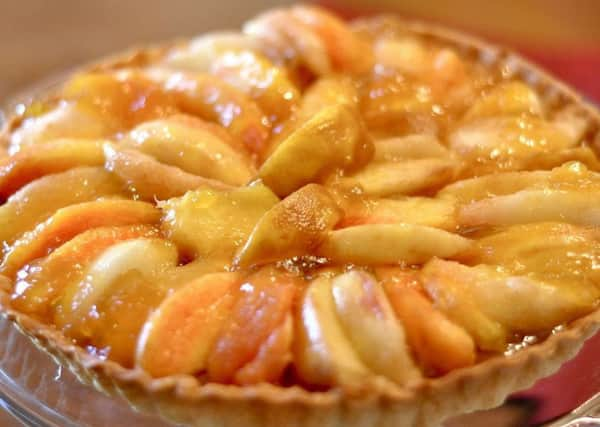Bakery Bulletin by Philippa Kelly: Breaking bread, and almonds, and custard...


It’s Italian. Obviously. Well, no, I suppose it could be Latin. It’s not though. From this catchy phrase comes frangipane.
It’s called frangipane outside of Italy too because “breakybread” doesn’t have quite the same ring to it.
Advertisement
Hide AdAdvertisement
Hide AdFrangipane is kind of like custard. A really fancy custard with squashed up almonds in it. It’s not the sort of thing you’d eat on its own.
There’s no “would you like a pain aux raisins today, or a dollop of almond goo?”.
It’s more of a “I’ll have a bakewell tart please, and oh gosh, there’s almond goo in it. Fancy that. Isn’t that great. What? Oh, sorry - please, carry on. No, really, please. Sorry for the interruption. So rude. Oh, this isn’t actually very nice. Doesn’t matter. I’ve paid for it now, so I’ll eat it. Look, you carry on with the frangipane story. Don’t mind me. I’m done now. Not another word. Consider me silenced. In fact, I’m going to leave. Yeah, that’s better isn’t it? I’ll go. Call me? Or not. That’s cool too. Anyway, I’m off now.”
Bakewell tarts are perhaps best known for their parasitic frangipane infestation, but they are not alone. Frangipane is also the key ingredient in a Conversation Tart (it’s a French pastry, not a high class hooker), a Jesuite (French again, and shaped like a Jesuit’s hat), and a Pithivier (French yet again, but named after its town of origin, not a quote from a man with a lisp who didn’t appreciate your sudden change of direction).
Advertisement
Hide AdAdvertisement
Hide AdAll of the above are broadly similar - pastry, frangipane, and icing. The only one that warrants further explanation is Pithivier. The ingredients are much the same, and it would be as forgettable as its peers were it not for its appearance.
A Pithivier is created by taking two little discs of puff pastry, putting a lump of frangipane on the first disc, and then smooshing the second disc on top. They look a bit like ravioli, and the lump being clearly visible is apparently important. Why? Because it signifies France being resilient and standing resolutely against adversaries both at home and abroad. Not really. I don’t actually know why the lump is important.
The French obsession with frangipane doesn’t stop with tarts, jesuits, and lumps; there’s also such a thing as a King Cake. It’s rolled out for Epiphany. It’s a big round cake made with layers of frangipane, and there’s a small plastic baby figurine somewhere inside.
The cake is distributed by Le Petit Roi (The Little King), who is a small child and usually hides under the dining table. If your piece of King Cake contains the plastic baby, then, well, I assume good stuff happens. I also assume the tradition became less popular after Operation Yewtree.
Advertisement
Hide AdAdvertisement
Hide AdIn the 11th century, a noble Roman family liked frangipane so much that they named themselves after it. The Frangipani family had many notable members, including one who arrested a pope, and one who was a Benedictine Monk. The monk was also a hermit, and he was canonised. That just means that he was made into a saint. I thought maybe he joined a circus and was ejected from a cannon and through a fiery hoop and onto the back of a lion who in turn was standing on the elephant’s back, but no, he was just a saint. Boring. Still, I’ve got the theme tune to The Saint in my head now, and that’s nice.